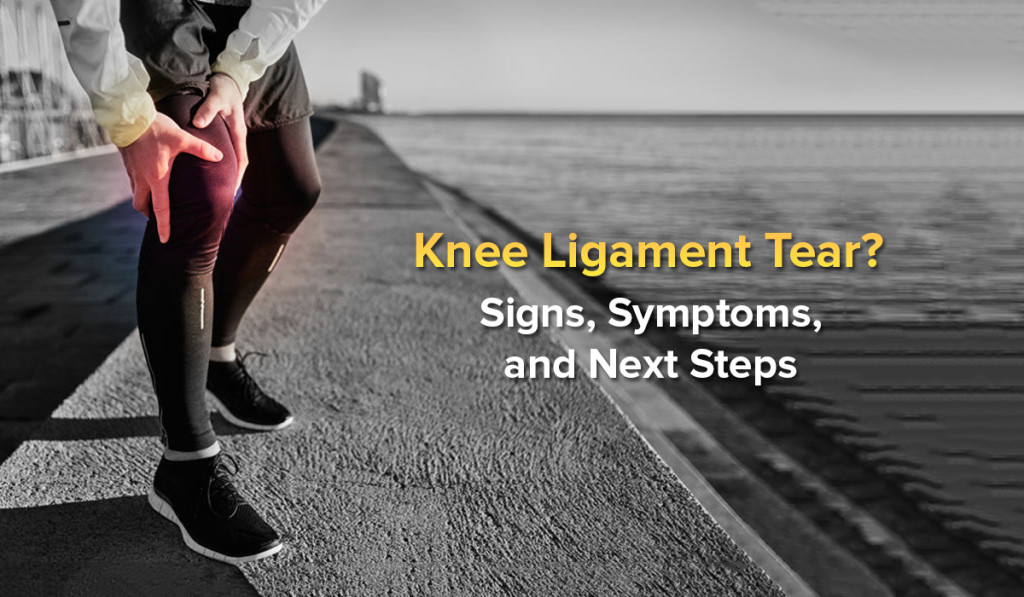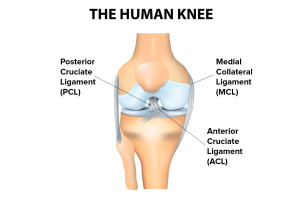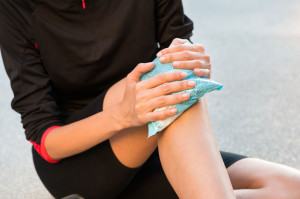Knee Ligament Tear? Signs, Symptoms and Next Steps

The knee is the most commonly injured joint in the human body. As your largest joint, everyday wear and tear can easily cause you discomfort. The causes of knee injuries range from simple trips or falls that heal in a few days, to larger accidents, which may require surgery or months of therapy to recover from.
The Most Common Types of Knee Injuries
- Sprains and strains
- Bruises and abrasions
- Cuts and punctures
- Dislocations
- Fractures
Sprains and Strains
Let’s look at sprains and strains to the ligaments in our knee. Sprains and strains account for almost half of all injuries to the knee joint. Sprains are the stretching or tearing of ligaments (the tough bands of tissue that connect two bones together in your joints). Strains on the other hand, are the stretching or tearing of muscles or tendons (the tissues that connect muscles to bones). Next, we’ll focus on sprains to ligaments in the knee.
Ligaments – ACL, MCL, PCL
There are four ligaments around the knee joint. These ligaments help support and stabilize the joint in a variety of different ways. Three of the most common types of knee injuries (shown in the diagram below) include sprains to the Anterior Cruciate Ligament (ACL), Medial Collateral Ligament (MCL), and Posterior Cruciate Ligament (PCL).
Causes of Injury
 Let’s look at the most common causes of injury to your ACL, MCL, and PCL. You can sprain your ligaments in a variety of ways, but each sprain has a common cause of injury.
Let’s look at the most common causes of injury to your ACL, MCL, and PCL. You can sprain your ligaments in a variety of ways, but each sprain has a common cause of injury.
- ACL – most commonly injured while stopping, slowing down, or changing directing suddenly.
- MCL – when you twist your knee or get a blow to the outside of your knee. An example of this kind of blow would be if someone hit you on the outside of your knee with a hockey stick.
- PCL – when a major force goes through the top of your shin pushing the knee backwards, like when you trip, fall down the stairs and land on your shin.
Not sure what type of strain or sprain you might have? Check out the signs and symptoms!
Possible Sprain | Sign/Symptom |
ACL | Popping noise on impact or initial tear, swelling, pain or tenderness along the joint, loss of mobility, difficulty walking |
MCL | Swelling, pain on the inside of the knee, trouble bending and extending the knee, instability. |
PCL | Knee pain, swelling, instability, difficulty with activities with bending the knee |
Treatment
Treatment for many knee injuries, including sprains and strains, starts with RICE: Rest, Ice, Compression, and Elevation. This will help take some immediate pressure and pain away from the knee.
Check out these RICE Tips:

- Rest – Rest will help your body recover faster by taking pressure off the injury. If injured, stop activity as soon as possible and avoid putting weight on your injured knee.
- Ice – Icing an injury can help reduce inflammation. Remember to wrap a cold compress, ice, or frozen peas in a thin towel. Never apply ice directly to your skin or leave ice on an injury for more than 20 minutes since this could cause frostbite or skin damage. A good rule of thumb is to apply ice for 15 minutes and then leave ice off long enough for your skin to re-warm.
- Compression – Compression helps reduce swelling in the knee. Not sure how to compress your injury? An easy solution is to wrap a tensor bandage around your knee.
- Elevation – Elevating the knee can also help to reduce swelling. Keeping your knee raised above the heart is the most effective. If you’re lying on the couch or in bed, prop your knee up on a few pillows.
Follow Up
Following RICE, you should see your doctor or physiotherapist to help determine the best course of treatment for your injury. You may need surgery, but most injuries will at least require a rehabilitation program. Your doctor or physiotherapist can design a program for you that will help you regain strength and mobility in your knee. It’s important to follow your health care professional’s instructions carefully to avoid re-injury and to help get you back on your feet again as soon as possible!
